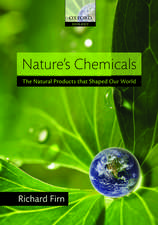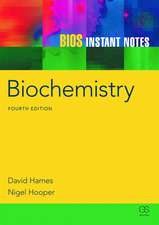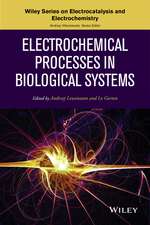The Prostaglandins
Editat de Peter Ramwellen Limba Engleză Paperback – 21 dec 2011
| Toate formatele și edițiile | Preț | Express |
|---|---|---|
| Paperback (2) | 395.47 lei 6-8 săpt. | |
| Springer Us – 21 dec 2011 | 395.47 lei 6-8 săpt. | |
| Springer Us – 25 noi 2012 | 397.97 lei 6-8 săpt. |
Preț: 395.47 lei
Nou
Puncte Express: 593
Preț estimativ în valută:
75.68€ • 78.72$ • 62.48£
75.68€ • 78.72$ • 62.48£
Carte tipărită la comandă
Livrare economică 14-28 aprilie
Preluare comenzi: 021 569.72.76
Specificații
ISBN-13: 9781461345466
ISBN-10: 1461345464
Pagini: 368
Ilustrații: XII, 350 p. 14 illus.
Dimensiuni: 170 x 244 x 19 mm
Greutate: 0.59 kg
Ediția:Softcover reprint of the original 1st ed. 1974
Editura: Springer Us
Colecția Springer
Locul publicării:New York, NY, United States
ISBN-10: 1461345464
Pagini: 368
Ilustrații: XII, 350 p. 14 illus.
Dimensiuni: 170 x 244 x 19 mm
Greutate: 0.59 kg
Ediția:Softcover reprint of the original 1st ed. 1974
Editura: Springer Us
Colecția Springer
Locul publicării:New York, NY, United States
Public țintă
ResearchCuprins
1 Aspirin and Prostaglandins.- I. Introduction.- II. Inhibition of Prostaglandin Synthetase from Different Species and Tissues by Nonsteroid Anti-Inflammatory Agents.- III. Relationship between Potency of Aspirin-Like Drugs Against Prostaglandin Synthetases In Vitro and Anti-Inflammatory Activity.- IV. Contribution of Prostaglandins to the Inflammatory Process.- V. Relationship between In Vivo Inhibition of Prostaglandin Generation and Therapeutic Effects of Nonsteroid Anti-Inflammatory Drugs.- VI. Side-Effects of Nonsteroid Anti-Inflammatory Agents.- VII. Use of Nonsteroid Anti-Inflammatory Drugs as a Test for the Involvement of Prostaglandins in Some Biological Systems.- VIII. Conclusions.- IX. References.- 2 The Thyroid Gland.- I. Introduction.- II. Occurrence and Synthesis of Prostaglandins in the Thyroid.- III. Effects of Prostaglandins on Thyroid Gland Metabolism.- IV. Interrelationships of Prostaglandins and TSH.- V. Summary.- VI. References.- 3 The Mature Erythrocyte.- I. Introduction.- II. Prostaglandins in the Erythrocyte.- III. Action on the Mechanical Properties of the Red Cell.- IV. Effects on Obligatory Cation Exchange.- V. Metabolic Effects of Prostaglandins.- VI. Effects on Hemoglobin.- VII. Implications in the Pathological State.- VIII. Prostaglandin Antagonists.- IX. Use of Prostaglandins in Preparation and Storage of Plasma Concentrates.- XI. Conclusions.- XI. References.- 4 Prostaglandin Dehydrogenase.- I. Introduction.- II. Metabolic Deactivation.- III. PGDH Distribution.- IV. Enzyme Purification.- V. Some Properties of the Purified PGDH.- VI. Characteristics of Binding to PGDH.- VII. Reversibility of PGD.- VIII. Other Regulatory Factors.- IX. Enzymatic Assay of PGs.- X. Summary.- XI. References.- 5 Behavioral Effects.- I. Introduction.- II. Role ofProstaglandins in Brain Function.- III. Role of Prostaglandins in Neurotransmission.- IV. Metabolism of Prostaglandins in Brain.- V. Effects of Prostaglandins on Behavior.- VI. Effects of Prostaglandins on Body Temperature.- VII. Summary and Conclusions.- VIII. References.- 6 Embryonic and Fetal Development.- I. Introduction.- II. Action on the Early Conceptus.- III. Teratogenicity Studies.- IV. Fetal Effects in Humans.- V. Prostaglandin-Progesterone Effects.- VI. Prostalandin-Synthetase Inhibitors.- VII. Prostaglandins and the Placenta.- VIII. Conclusions.- IX. References.- 7 Search for Common Mechanisms Underlying the Various Effects of Putative Inflammatory Mediators.- I. Introduction.- II. Historical Background.- III. Actions of and Interactions Between Potential Mediators and Drugs.- IV. Evidence from Studies on Anti-Inflammatory Drugs in Isolated Cell Systems.- V. Summary and Conclusions.- VI. References.- 8 Immunology.- I. Introduction.- II. IgE-Mediated Release of Histamine and Other Mediators.- III. Lymphocyte Cytolytic Activity.- IV. The Humoral Antibody Response.- V. Neutrophil and Macrophage Function.- VI. Lymphocyte Proliferation.- VII. Speculation on Prostaglandins and the Immune Response.- VIII. References.- IX Site-Directed Mutagenesis.- Appendix A UV Spectral Characteristics and Acidic Dissociation Constants of Modified Bases, Nucleosides, and Nucleotides.- Appendix B Acid, Neutral, and Basic Spectra of Bases, Nucleosides, Nucleotides, and 55 Modified Derivatives.











